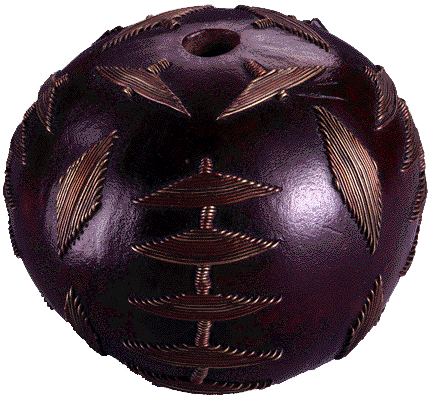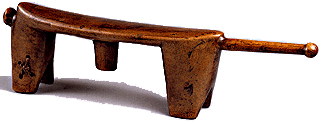Many of the sites where such paintings and engravings appear show evidence of use over long periods of time, suggesting that they had ritual significance, such as healing ceremonies or for attracting game animals or rain. The earliest examples have been d ated to twenty-seven thousand five hundred years ago and are thus contemporary with the cave art of Europe. The most recent date from the nineteenth century.
A similar historical spread characterizes decorated ostrich eggshells from this region - some are as old as fifteen thousand years, dating earlier than Egyptian examples, while others date from the nineteenth century.
With the exception of rock painting and engraving, the arts of southern Africa have tended to be underrated and underreported outside the area. The region's impressive stone ruins, especially those of Great Zimbabwe, were long attributed to outsiders on t he assumption that Africans were incapable of producing such imposing architecture. Recently, however, it has been clearly established that these sites are African in origin and concept. The inland trading empires that produced them, such as that of the S hona, the builders of Great Zimbabwe, were supported by the Indian Ocean gold trade.

Lydenburg Head
Eastern Transvaal, South Africa, ca. A.D. 500-700. Traces of white pigment and specularite on clay, 38 x 26 x 25.5 cm. University of Cape Town Collection at the South African Museum, Cape Town.
The exceptional find of terra-cotta heads at Lydenburg in the eastern Transvaal are the earliest-known sculptures from southern Africa. They have been dated to the sixth through eighth century a.d. Although their use is unknown, two may have been worn as masks, possibly for initiation rituals.


